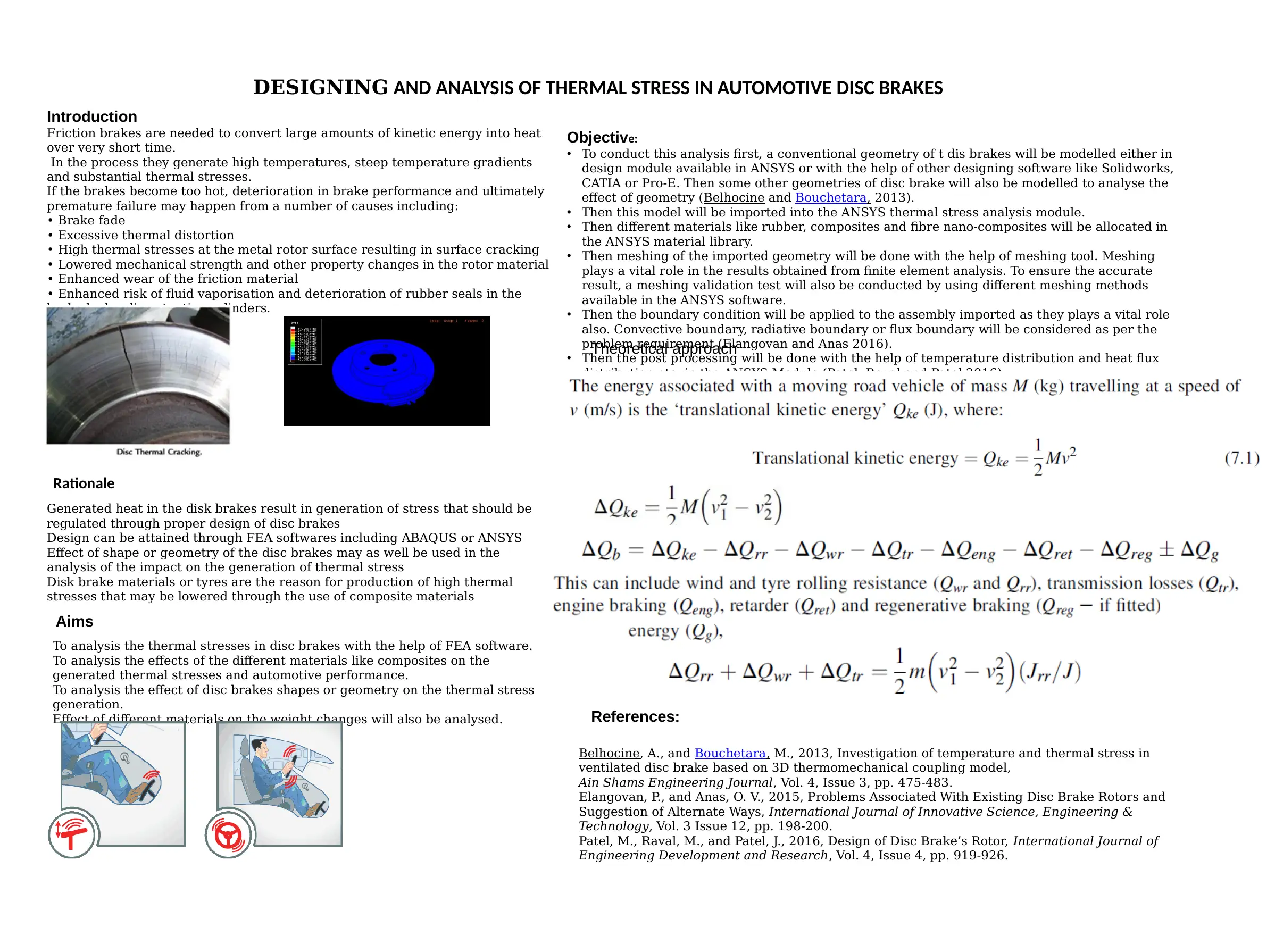Project: Thermal Stress Analysis in Automotive Disc Brakes
VerifiedAdded on 2023/04/26
|1
|640
|413
Project
AI Summary
This project focuses on the design and analysis of thermal stress in automotive disc brakes to minimize high temperatures and reduce thermal deformation. The analysis involves modeling different disc brake geometries using design software like ANSYS, Solidworks, CATIA, or Pro-E, followed by importing the model into ANSYS for thermal stress analysis. Different materials, including rubber, composites, and fiber nano-composites, are considered from the ANSYS material library. Meshing is performed with validation tests to ensure accuracy. Boundary conditions, such as convective, radiative, or flux boundaries, are applied. Post-processing involves analyzing temperature and heat flux distribution. The project aims to analyze thermal stresses using FEA software, evaluate the effects of different materials like composites on thermal stresses and automotive performance, and assess the impact of disc brake shapes on thermal stress generation, along with material impact on weight changes. The project is supported by several research papers and aims to improve disc brake design and performance.





![[object Object]](/_next/static/media/star-bottom.7253800d.svg)